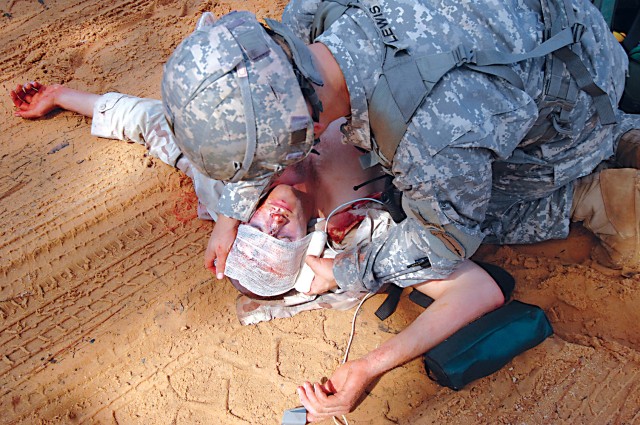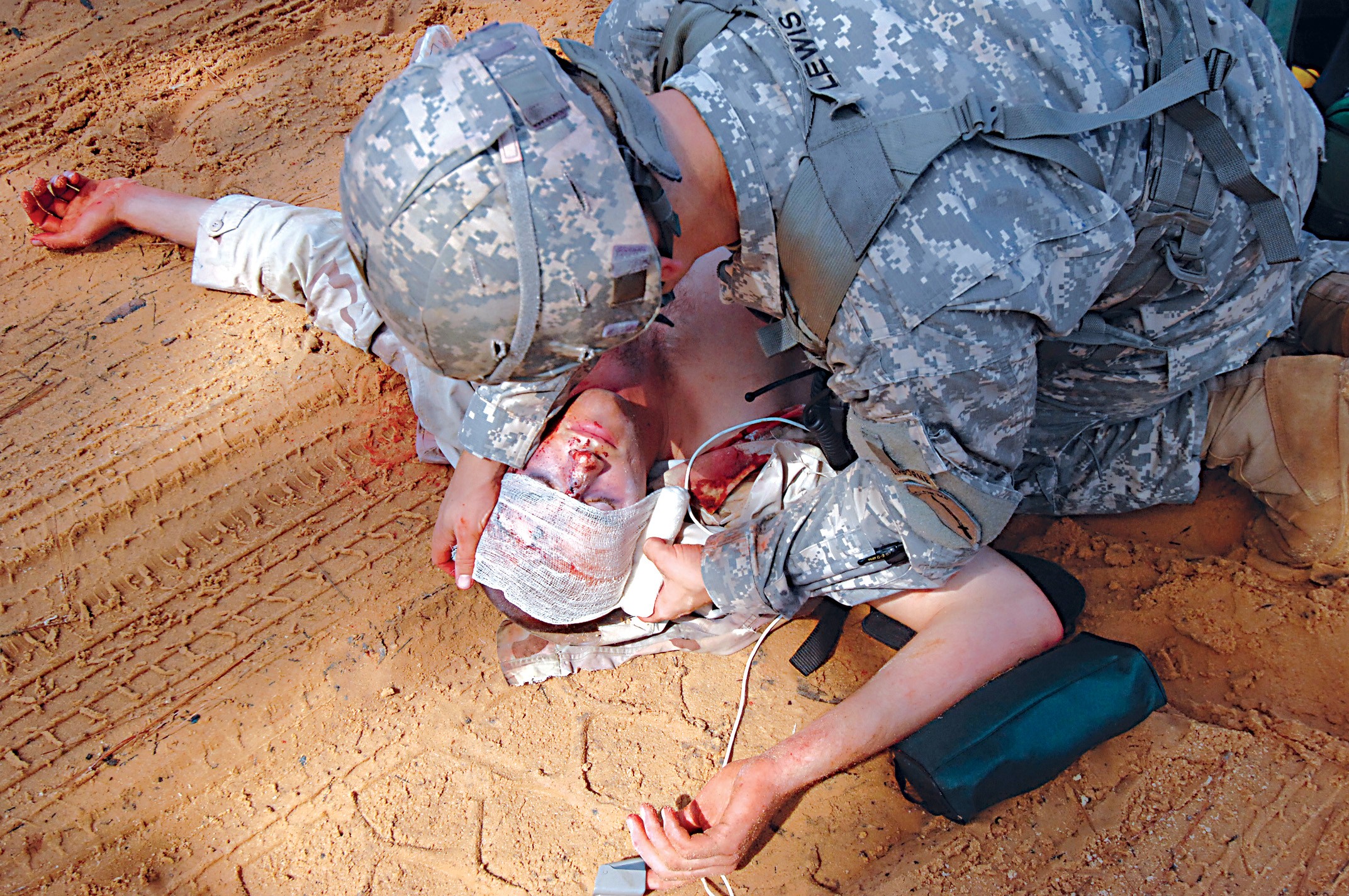EGLIN AIR FORCE BASE, Fla. - Four consecutive horrific "accidents" left bloody bodies of 6th Ranger Training Battalion Soldiers strewn all over the Eglin ranges Oct 1.
That was just part of the 6th RTB's annual mass-casualty exercise to examine how effective the battalion responds as a group and how well it communicates and works with outside emergency agencies in the event of a catastrophe on the range.
"This is a high-risk scenario," said LTC Charles Seifert, 6th RTB commander. "We have to be able to coordinate and orchestrate chaos and maintain command and control procedures as well as interact effectively with outside agencies. That's the goal today."
The exercise was dubbed "The Weaver" due to its proximity to Weaver River, which runs through the range. The event was also meant to mirror some of the scenarios the 6th RTB faced in 1995 when four Soldiers died from hypothermia. The accident now referred to as "Crane Lake," and its events inspired the annual training.
The exercise was meticulously planned out with many "what if" scenarios discussed prior to the kick off.
"Airborne Rangers want to perform well, but we need to make sure we all learn something today," said CPT Matthew Myer during a pre-brief.
The exercise simulated four casualty events. The first accident involved a broken rope bridge putting soldiers in the river and one suffering an eye injury. Another had Soldiers in the water suffer hypothermia with simulated temperatures similar to "Crane Lake." Further down the river, a Soldier had an allergic reaction to a bee sting. As Soldiers moved the bee-sting victim to be evacuated, they encountered a civilian vehicle with three casualties - one trapped inside.
Soldiers had to respond to the incidents and make contact with civilian paramedics and firefighters to either evacuate the victims by ambulance or helicopter. Evaluators watched closely to ensure proper procedures were in place and the radio constantly buzzed with updates to "75" (primary instructor) from across the range. The evaluators let the scenarios play to see what choices the Soldiers would make to best rescue the wounded and extract the victims.
Many moving parts worked together to accomplish the mission much more timely than expected.
"We were able to extract and treat all 10 casualties within that all-important 'golden hour,' even those who only sustained minor injuries," Seifert said. "Honing our procedures and combining with all these other agencies to meet a goal like that is a tremendous success."


Social Sharing